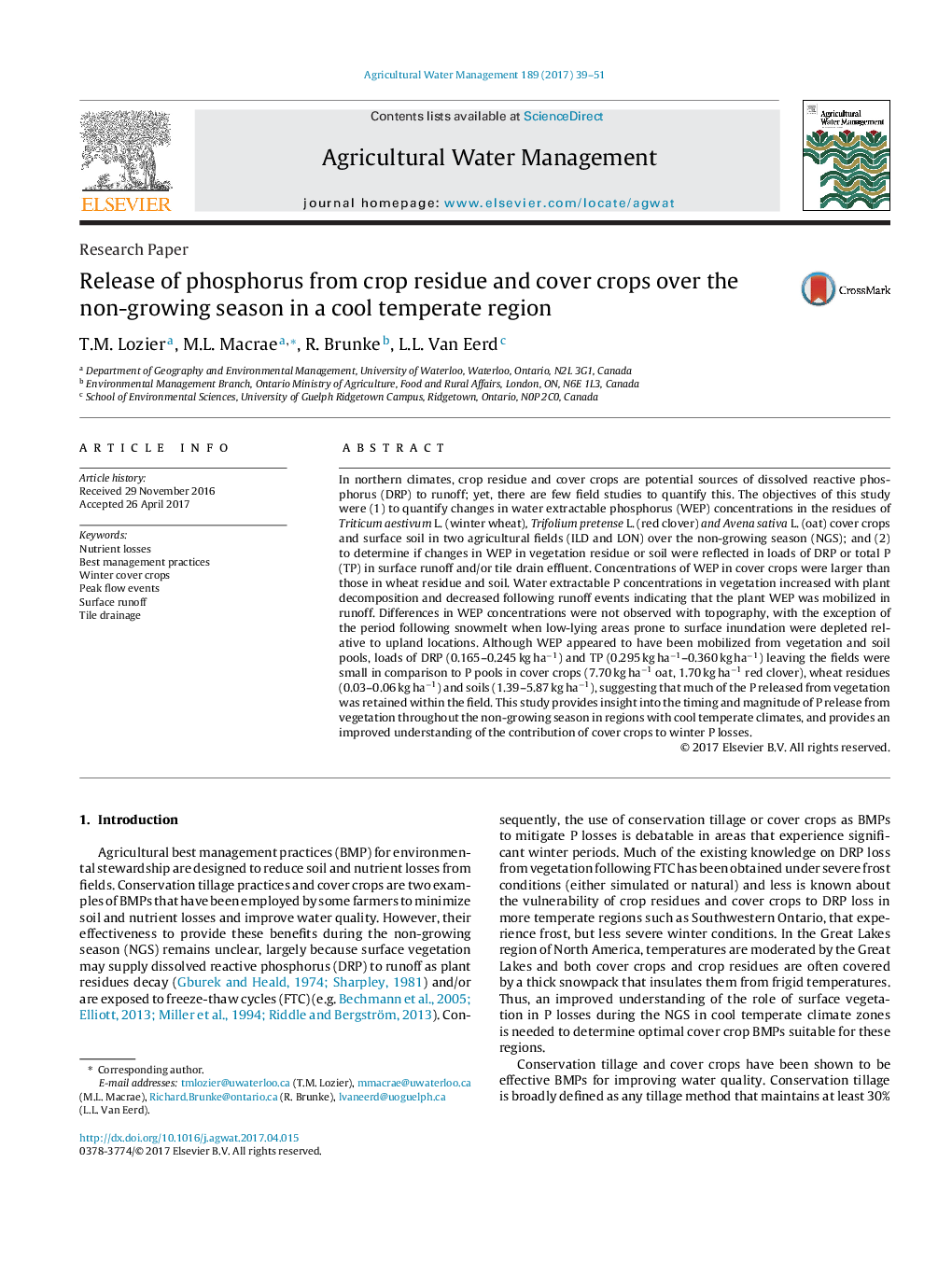| Article ID | Journal | Published Year | Pages | File Type |
|---|---|---|---|---|
| 5758340 | Agricultural Water Management | 2017 | 13 Pages |
Abstract
In northern climates, crop residue and cover crops are potential sources of dissolved reactive phosphorus (DRP) to runoff; yet, there are few field studies to quantify this. The objectives of this study were (1) to quantify changes in water extractable phosphorus (WEP) concentrations in the residues of Triticum aestivum L. (winter wheat), Trifolium pretense L. (red clover) and Avena sativa L. (oat) cover crops and surface soil in two agricultural fields (ILD and LON) over the non-growing season (NGS); and (2) to determine if changes in WEP in vegetation residue or soil were reflected in loads of DRP or total P (TP) in surface runoff and/or tile drain effluent. Concentrations of WEP in cover crops were larger than those in wheat residue and soil. Water extractable P concentrations in vegetation increased with plant decomposition and decreased following runoff events indicating that the plant WEP was mobilized in runoff. Differences in WEP concentrations were not observed with topography, with the exception of the period following snowmelt when low-lying areas prone to surface inundation were depleted relative to upland locations. Although WEP appeared to have been mobilized from vegetation and soil pools, loads of DRP (0.165-0.245 kg haâ1) and TP (0.295 kg haâ1-0.360 kg haâ1) leaving the fields were small in comparison to P pools in cover crops (7.70 kg haâ1 oat, 1.70 kg haâ1 red clover), wheat residues (0.03-0.06 kg haâ1) and soils (1.39-5.87 kg haâ1), suggesting that much of the P released from vegetation was retained within the field. This study provides insight into the timing and magnitude of P release from vegetation throughout the non-growing season in regions with cool temperate climates, and provides an improved understanding of the contribution of cover crops to winter P losses.
Related Topics
Life Sciences
Agricultural and Biological Sciences
Agronomy and Crop Science
Authors
T.M. Lozier, M.L. Macrae, R. Brunke, L.L. Van Eerd,
